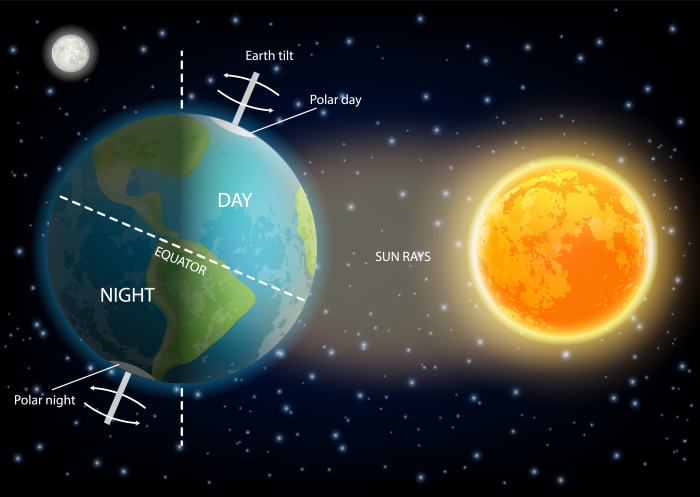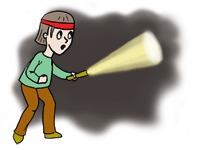The Earth is an amazing planet!

"Hello! I'm Simon the Scientist and today we're going to learn more about how the Sun affects life on Earth!"
Earth is a planet and we live on it. It stays in space because of gravity.
Gravity is a force that helps the planet to spin and keeps everything where it is on Earth!

Also in space, is the Sun.
The Sun is a huge burning star that gives the Earth sunlight and warmth.

The Earth spins every day and this takes 24 hours to spin once.
At the same time, the Earth is also moving around the Sun in a circle. This is called orbiting.
As the Earth moves around the Sun, it tilts towards the Sun during the summer months and away from the Sun in the winter months.
Just as in this picture below:

The weather is warmer and drier in the summer. We get more hours of daylight when our part of the Earth is tilted towards the Sun (this means facing the Sun). The longest day is in the summer.
The weather is colder and wetter in the winter. We get fewer hours of daylight when our part of the Earth is tilted away from the Sun (this means not facing the Sun). The shortest day is in the winter.

"We can imagine the Earth is like a football and the Sun is like a torch, or candle we can hold close to it"


The side of the football that is facing the torch will have more light and heat on it than the side that is facing away.
This is like how the Sun and Earth work and why we have more daylight hours in summer and fewer daylight hours in winter.
Remember, there are always 24 hours in a day, but the amount of daylight changes throughout the year.
Now let's use all of this to help us learn more about daylight hours - let's go!








